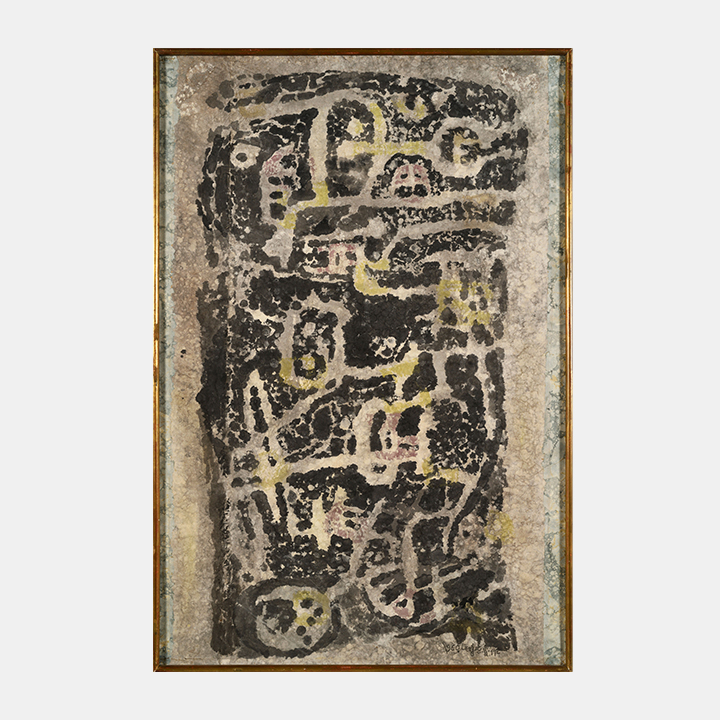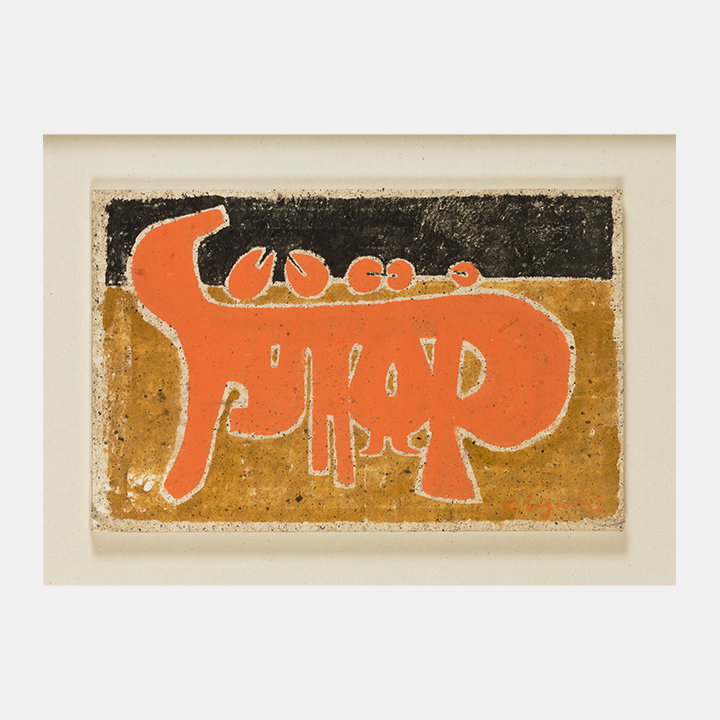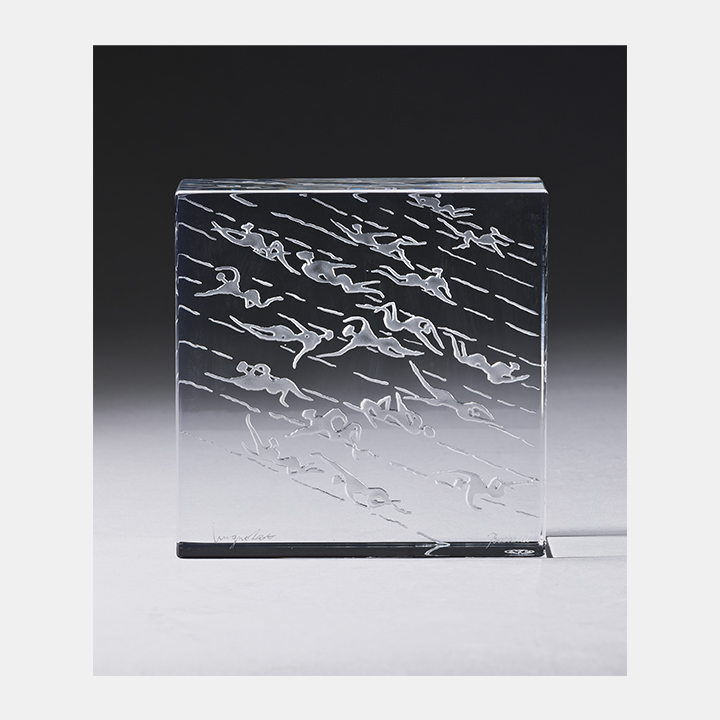ARTIST
Lee Ungno
이응노
1904-1989
Lee Ungno(1904-1989) was an artist who experimented with a unique formative language through the harmony of Korean ink painting and European Art Informel techniques and who worked with diverse media and forms. Lee, who had studied traditional literary painting and calligraphy, and had painted realistic landscapes, began to expand the scope of his media to paper collage and to experiment with amorphous abstraction influenced by Art Informel after going to France to study in the late 1950s. It was from this period that human figures and letter abstraction began appearing in his works, but it was during the 1970s that he began to study letter abstraction based on his training in calligraphy and painting in the literary artist’s style. In the 1980s, he mainly painted large groups of people, influenced by the movement for democratization in Gwangju, making a transition in style from abstract to figurative while studying a formative language based on the sentiments of the Korean people. Thus, Lee Ungno, who expanded his work according to the flow of the spirit of the times, built a unique realm of work by successfully encompassing East and West and seeking harmony between the traditional and the modern.
한국적인 수묵화와 유럽 앵포르멜의 조화를 통해 본인만의 독특한 조형언어를 실험한 이응노(1904-1989)는 영역불문한 다양한 매체와 형식의 그림을 시도했던 화가다. 초기에는 전통 문인화와 서예를 배우고, 사실적인 현실풍경을 그렸던 그는 프랑스로 유학을 떠난 1950년대 말부터 종이 콜라주로 매체를 확장하고, 앵포르멜의 영향을 받은 비정형의 추상을 실험했다. 특히 이 시기부터 인간군상과 서예를 활용한 문자추상이 그의 작업에서 조금씩 나타났으나, 그는 1970년대부터 본격적으로 서예와 문인화의 기본기를 바탕으로 한 문자추상을 연구하기 시작했다. 이어서 1980년대는 광주민주화 운동의 영향을 받아 인간군상을 그리며 추상에서 구상으로 화풍을 전환하고, 우리민족의 정서를 바탕으로 한 조형언어를 연구하기에 이른다. 이처럼 시대정신의 흐름에 따라 작업을 확장한 이응노는 동양과 서양을 아우르고, 전통과 현대의 조화를 이룸으로써 자신만의 독특한 작업영역을 구축했다.




















